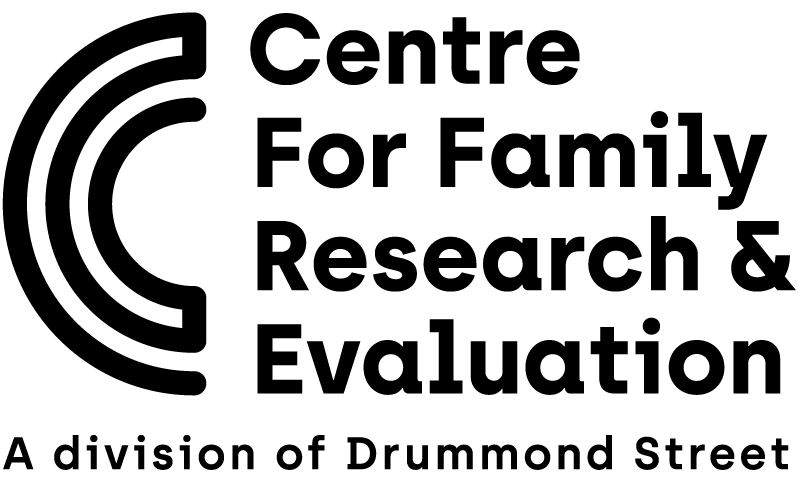Good programs don’t just happen. They require thought, planning and resources. A good place to start is with the question: “What are we currently doing and what should we be doing to achieve our goals?”
 When working in prevention and early intervention, a useful model for program planning is the public health approach. This approach is helpful because it recognises that health and wellbeing are influenced by the social and environmental context in which a person finds themselves, as well as their individual traits and characteristics. Using this approach will help to focus a program on the social determinants of health, such as income, cultural background, gender, employment, education and social support [1]. It explains how the conditions in which people are born, grow, live, learn, work and age can be influenced by the unequal distribution of money, power and resources [2]. Therefore, when looking at changing the behaviours of an individual, agencies need to consider the whole community and context in which an individual lives, learns and works, such as social policies, politics, the service system, community functioning and social norms. This is the ecological model of health [3].
When working in prevention and early intervention, a useful model for program planning is the public health approach. This approach is helpful because it recognises that health and wellbeing are influenced by the social and environmental context in which a person finds themselves, as well as their individual traits and characteristics. Using this approach will help to focus a program on the social determinants of health, such as income, cultural background, gender, employment, education and social support [1]. It explains how the conditions in which people are born, grow, live, learn, work and age can be influenced by the unequal distribution of money, power and resources [2]. Therefore, when looking at changing the behaviours of an individual, agencies need to consider the whole community and context in which an individual lives, learns and works, such as social policies, politics, the service system, community functioning and social norms. This is the ecological model of health [3].
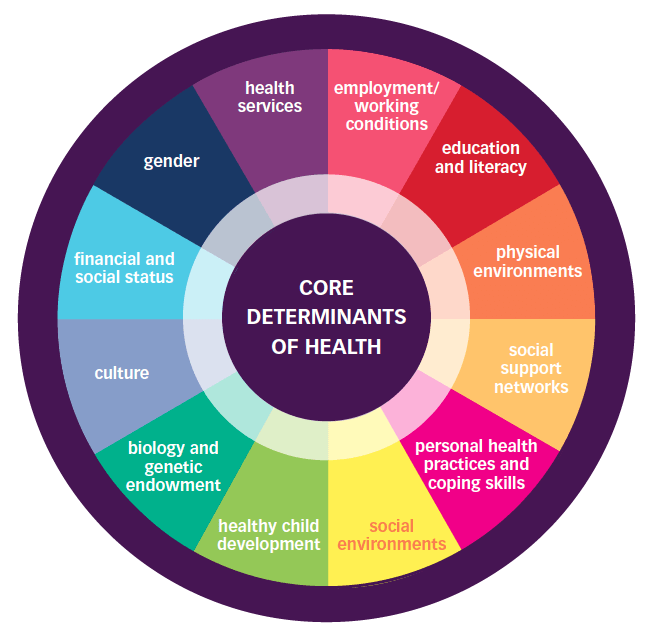
Ideally, monitoring and evaluating the program should begin right from the planning stage. This will ensure your program uses the best available evidence, is implemented as planned is reaching the intended target groups and delivering the desired outcomes. Evaluation can also ensure client and community voices are heard throughout the process.
Determine program need and who to target
The first questions to ask when designing a program are:
»» What are the needs and interests of the community and how do they want to be involved?
»» What challenges are they experiencing, or what problems are they facing?
»» What is the root cause of these problems?
»» Do we need a program, and if so, what kind of program?
Needs Assessment
The evidence of the need for a program provides a clear rationale for the program to exist. Therefore, it is important to assess the nature, magnitude and distribution of a social problem, and the extent to which there is a need for an intervention to address this issue. Understanding the problem can guide the development and design of the program. A needs assessment is used as a first step for either designing and planning a new program, or restructuring an existing program. It can identify what services are needed and how that might best be delivered to those who need them. It can also determine whether an established program is responsive to client needs and can guide program improvement.
Determine Root Causes
The first step in determining the need for a program is to define the problem. As problems can be omplex and have multiple causes, a useful tool to tease out the problem is a problem/solution tree analysis [4]. This is a visual map of the problem that aims to identifies all possible causes and direct the program or service to tackle the most prominent causes.
This process has four basic steps:
Step 1: Settle on the core problem
Step 2: Identify the causes and effects
Step 3: Develop a solution tree
Step 4: Select the preferred intervention
The problem tree can then be flipped to consider how the effects might be different when each cause is addressed by a solution that influences the occurrence or severity of the problem. This can assist in prioritising the factors to focus on in the program.
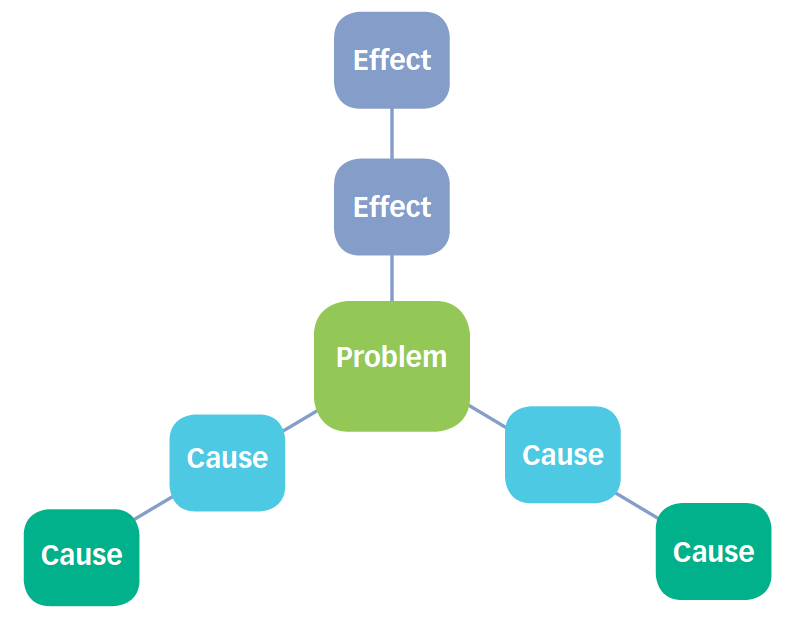
Identifying the community needs and service gaps
To inform the problem identification, causes and solutions a consultation process with the community and stakeholders is a useful process. To help you determine who you might consult with, a stakeholder analysis can be conducted. For example, a stakeholder analysis might include the following [5]:

The community engagement as part of the needs assessment may involve interviews, focus groups, surveys or analysis of demographic and social data such as national census data, state or local government data. The resulting description of social problems, service usage, and perceived needs can then be assessed against a view of desired conditions. Consultation takes resources, and you may have to balance your ideals with your finances, but consulting your community can be done in many ways. Look for a process that will both give you the information you want and move you along the way to finding solutions within your present resources.
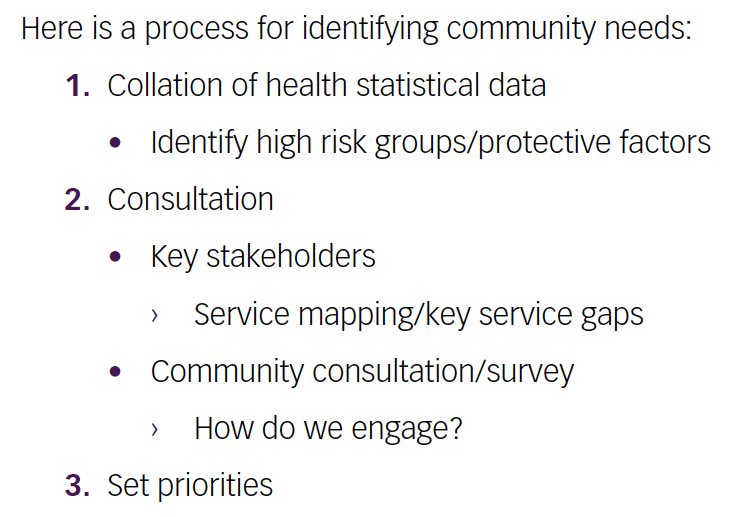
The goals of your organisation will be set by the interplay between the services and products you are equipped to provide, the needs of the community you serve, and the expectations of funding bodies. Communities come in many different forms and all will have different ways of approaching their goals. Once you have gone through the processes of identifying and understanding your community and identifying its assets and resources you will need to establish how you can best serve its needs.
What causal factors might you look at for your community?
The ecological approach to public health aims to ensure that interventions consider and address the conditions across different levels (e.g. individual, family, community and society). This is based on evidence that shows that no single factor can explain why some people or groups are at higher risk while others are more protected from health issues. This is usually expressed in terms of the combination of risk and protective factors experienced by an individual.
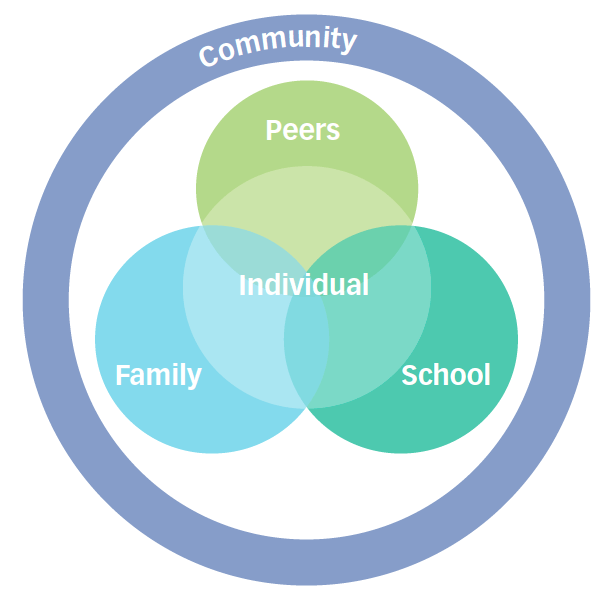
It is an individual’s personal factors, as well as their relationships, the school and community setting, environment and broader systems that are all important in determining their wellbeing. As these are all interconnected, choosing an interventions at one or more level can influence the risk and protective factors within other levels. For example, interventions to reduce risk factors in adolescents and young adults are likely to be most effective where they begin prior to conception.
Common Risk and Protective factors
There are key common risk and protective factors across different domains (individual, peer, family and community) and age groups for 7 major preventable outcomes [6]:
»» Mental Illness
»» Developmental injury
»» School failure
»» Antisocial behaviour
»» Social exclusion
»» Substance abuse
»» Chronic illness
Example Risk Factors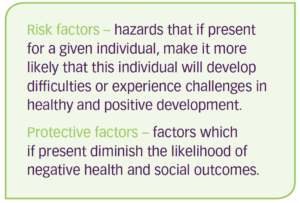
»» Harsh, inconsistent parenting styles
»» Parental mental ill-health
»» Lack of warmth and affection in parent-child relationship
Example Protective Factors
»» Emotional competency skills (parents and children)
»» Secure parent-child attachment
»» Parental involvement in children’s activities
References
1 VicHealth. (2013). Social Determinants of Health. Retrieved from https://www.youtube.com/watch?v=y9THQTEqMaU
2 World Health Organisation. Read more at http://www.who.int/social_determinants/en/
3 KidsMatter website: (Adapted from Bronfenbrenner, 1977). Read more at www.kidsmatter.edu.au
6 Toumbourou, J. (2015) A review of therapeutic processes targeted in evidence-based parent and family interventions, Prevention Science Consulting Group, Unpublished paper.

CFRE works directly with agencies and project teams to help them achieve their goals and priorities. From senior leadership groups to small program teams, our consultants walk alongside you to guide the design, development and improvement of your programs and services.
For more information, contact the team at cfre@ds.org.au
